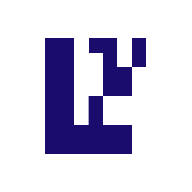Currently, the only way to save#ETHis #RWA, and BlackRock's tokenized fund#BUIDLhas already tried it. But among all ETH L2s, the best blockchain to run the RWA track should have the following characteristics: security, efficiency, low GAS, and auditability (compliance). At present, ETH L2 that naturally meets these requirements has been born, and Zk-Rollup @ZircuitL2 invested by Binance Labs, Pantera Capital and Dragonfly deserves attention!
Many people may be curious about why auditability is important for Web3 decentralization. In the current development of RWA, tokenized treasury bonds are mostly used. In the future, tokenized stocks or physical asset mapping (such as artworks, real estate, etc.) will be launched. For many unclean funds that want to fish in troubled waters in the market, it will become the highlight of compliance supervision in various countries. Zircuit's sorter solution with built-in AI screening function can autonomously monitor malicious activities, including addresses in the national blacklist, to effectively block and eliminate transactions. This undoubtedly brings advantages to the growth and development of RWA! In addition, the Zk-Rollup solution is superimposed, and security and efficiency are effectively guaranteed. The combination of the two is undoubtedly a star choice in the RWA track!
Project Introduction:
Zircuit (@ZircuitL2) is an innovative L2 network that uses a hybrid architecture that combines the Zk-Rollup model with Optimistic Rollups. It introduces a novel on-chain security system that protects the network through sequencer-level security and built-in automated AI mechanisms to prevent smart contract vulnerabilities and malicious attacks. This enables a secure, low-cost, and efficient EVM-compatible Zk-Rollup.
Zircuit has three core components:
1. Sorter: The sorter sorts transactions and generates cryptographic proofs. The system acts as an off-chain component that determines the order and batch submission of transactions to Ethereum for full data availability. Zircuit's sorter integrates AI-driven security features to monitor malicious activity. The platform's AI mechanism constantly monitors the memory pool for signs of malicious activity, including vulnerable contracts. Once these threats are identified and confirmed, blocks will be effectively blocked to ensure security.
2. Validator: Generates Zk-SNARK proofs to verify transactions without leaking data, runs on the Ethereum main chain, verifies the proofs submitted by the sorter, and ensures the accuracy and legitimacy of the transaction.
3. Modular architecture: Zircuit combines zero-knowledge proof with Optimism's Bedrock framework to improve operational efficiency and EVM compatibility, and achieve seamless integration with ETH applications!
Core advantages:
1. Compatibility: Zircuit supports all major Ethereum tools and wallets, allowing for seamless deployment of dApps without secondary development. This compatibility makes it easier for developers to adopt Zircuit without making major changes to existing workflows.
2. Sequencer Level Security (SLS)
Zircuit's innovative security concept uses artificial intelligence technology to provide security protection at the sequencer level, capable of detecting and blocking malicious transactions in real time. This innovative security design significantly reduces the risk of smart contract vulnerabilities and hacker attacks, providing users with a safer trading environment.
3. High performance and high efficiency
Zk-Rollup+Optimistic Rollups module architecture: Zircuit uses Zk-Rollup technology to achieve efficient transaction processing and faster confirmation time. The Optimistic Rollups solution greatly improves EVM compatibility. It not only improves transaction throughput, but also reduces users' transaction fees, and can run seamlessly on dApps on EVM-compatible chains, improving the overall user experience.
4. Comprehensive safety bridge
Zircuit provides a native bridge with the best security architecture. Users can easily and securely transfer assets between different networks without the security risks common in traditional bridge systems.
The investment background is very strong:
Investment institutions include: Binance Labs, Pantera Capital, Dragonfly, Robot Ventures, Amber Group and other well-known institutions!
Team Background:
Martin Derka is the co-founder of Zircuit and a senior software engineer at Quantstamp. He graduated from Brock University and the University of Waterloo with a PhD in Algorithms and Complexity.
Krishna Sriram is the co-founder of Zircuit and Chainproof, the managing director of Quantstamp, and a graduate of the University of British Columbia.
Joshua Tjokrosurjo is the ecological project director of Zircuit. He has served as a product manager at Bitwave and a senior DeFi project manager at Celsius Network. He graduated from Johns Hopkins University and the University of California, Irvine.
Jan Gorzny is the co-founder of Zircuit and was previously the Director of L2 Scaling at Quantstamp. He holds a PhD in Philosophy from the University of Waterloo and a Master’s in Algorithmic Graph Theory from the University of Victoria.
Dr. Z is the co-founder and technical lead of Zircuit.
Zircuit Token Economics:
Token name: $ZRC
Total Tokens: 10 billion
Token Allocation:
21.00% airdrops and community rewards (7% first quarter airdrops + 14% future airdrops)
12.61% Community
17.93% Ecosystem Development
18.70% Foundation
18.74% Team
11.02% Investors
Currently, the project token $ZRC has opened pre-market trading on#Gateand#Bybitexchanges!
Worth noting:
Zircuit recently launched the EIGEN Fairdrop program, distributing 2% of $ZRC tokens to more than 203,000 users who hold at least 3 #EIGEN. It can be seen that the project has always adhered to the concept of decentralization and community-driven, which is admirable!
Summarize:
Zircuit stands out among many L2s, using AI technology in the RWA field to highlight the technical advantages of the project. At the same time, the project team and financing background are very strong. At present, the project ecosystem has attracted more than 60 projects to participate. In the future, the project plans to expand more functions, including supporting the bridging of more high-quality assets (such as#SOL#SUI, etc.), and launch more decentralized applications. This will further enhance the attractiveness of its ecosystem and promote user growth. It is worth looking forward to in the long term!












